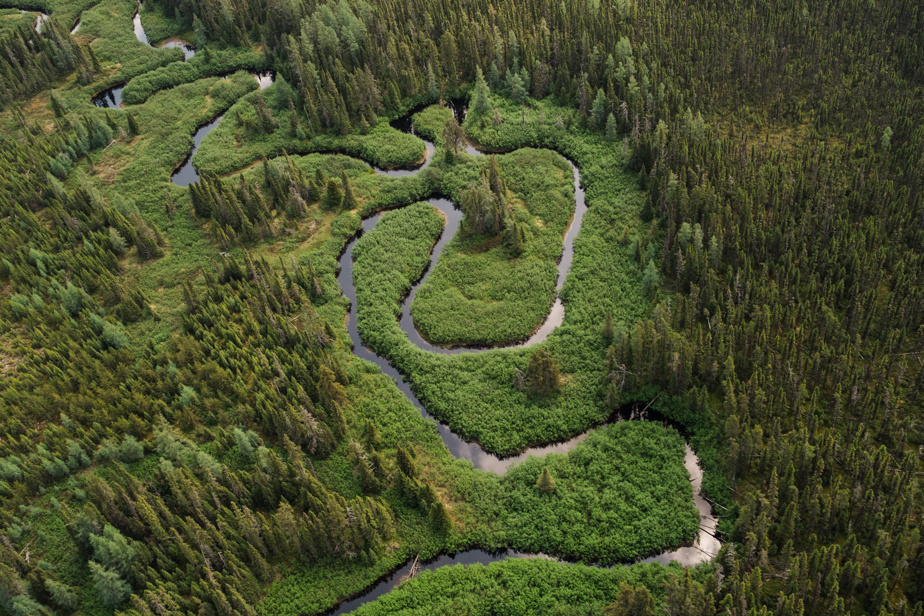Canada has long presented itself as the protector of one of its vital natural resources: the largest boreal forest in the world, which plays a crucial role in the fight against climate change.
However, a study based on half a century of data from Quebec and Ontario – two provinces among the most active in logging – reveals that the felling of trees has inflicted serious damage on the boreal forest. will be difficult to reverse.
Researchers led by a group from Griffith University in Australia – two of whom are from UQAM* – have established that since 1976, logging in these two provinces has led to the disappearance of 142,000 km2 of boreal forest (more double that of the entire Quebec territory south of the St. Lawrence River).
While there remain nearly 227,000 km2 of mature forest aged at least a century in the region, logging has reduced this forest, leaving a mosaic of fragmented stands on a territory less conducive to maintaining wildlife and flora, according to the study. It also made this forest more vulnerable to fires, according to scientists.
According to scientists who were not involved in the study, it represents a major breakthrough that sheds new light on the effect of commercial logging on the boreal forest, this immense northern expanse made up mainly of conifers.
“This is the first time that we have such a clear picture for the two largest provinces of Canada,” says Christian Messier, professor of forest ecology at UQAM, who did not participate in the study. I think that the approach, the methodology, is the most innovative aspect of this article. »
Canadian standards allow logging companies to clear-cut large areas; they are required to replant afterwards or demonstrate that the forest will regenerate naturally.
However, according to scientists, young trees are more vulnerable to forest fires, not having the thick bark of mature trees. Additionally, foresters prefer to plant commercial timber species rather than fire-resistant species.
“The Canadian government claims to have managed the forest according to the principles of sustainable forest management,” says Brendan Mackey, lead author of the study, professor and director of a climate research group at Griffith University in Brisbane. in Australia. “But in reality his view of sustainability is linked to maintaining and maximizing timber production and ensuring the regeneration of commercially valuable trees. This has many implications for biodiversity. »
Canadian authorities did not respond directly to questions about the study, limiting themselves to a written statement describing in general terms Canada’s efforts to preserve the boreal forest.
This policy focuses on “conservation, recreation, habitat, water quality, economic development and indigenous peoples’ relationship with land and forests,” according to the statement attributed to Carolyn Svonkin, spokesperson. word from the Canadian Minister of Energy and Natural Resources.
According to Peter Wood, a lecturer in forest resource management at the University of British Columbia in Vancouver, the study’s findings are “shocking” and show “what is at stake as the forest industry shifts towards older, more intact forest areas.”
The enormous boreal forest, of vital ecological importance, extends across North America, northern Europe and Siberia, but most of it is in Canada.
In addition to being the natural habitat of many animals and plants, the global boreal forest traps enormous amounts of CO2, a greenhouse gas. Its trees and soil are estimated to contain 703 gigatons of carbon, far more than the 375 gigatons held by tropical forests.
“This study clearly shows that where we have cut, certain fundamental characteristics of the forest have not returned,” underlines Jennifer Skene, climate policy analyst at the Natural Resources Defense Council, an American NGO which helped finance the study. .
Replanting after clearcutting mature forests produces younger, ecologically altered forests, Mackey said. They hold less carbon, are generally more vulnerable to disease and insect infestations, and are poor habitats for the many animals and plants that depend on old-growth forests to thrive or, in some cases, survive.
In the study, Mackey and other researchers examined the effects of logging on woodland caribou herds, which require large areas of old-growth forest and are affected by human disturbance . Forest roads, for example, make it easier for predators to hunt caribou, the researchers explained.
Of the 21 herds studied by the researchers, in northern Quebec and Ontario, 19 presented a high or very high risk of no longer being able to maintain their populations.
In other parts of the world, deforestation for uses such as agriculture and livestock is the main threat. But in Canada, the problem is different.
“Forest cover remains and we can still maintain the forest from a land management perspective,” he adds. But certain aspects of its ecological quality are degraded. »
Most environmentalists believe the degradation is caused by large-scale clear-cutting carried out almost everywhere in Canada.
“Forest degradation is the most important indicator for Canada: it best reflects what is really happening,” says Wood. Canada has downplayed the impact of the forest industry. »
